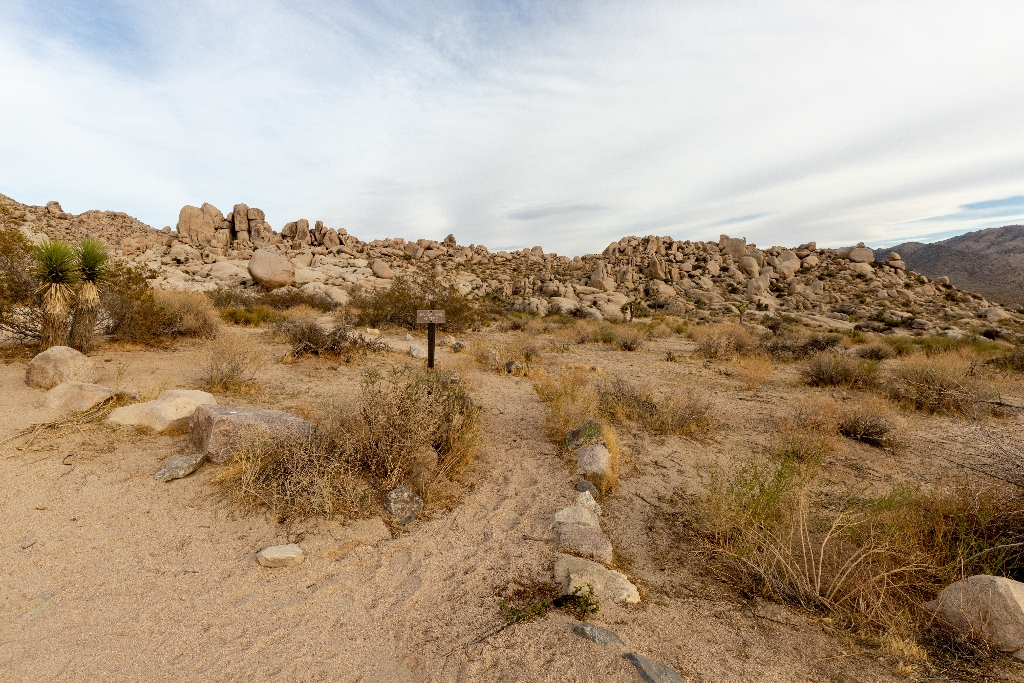
Ever-changing Landscape
This area wasn’t always a desert. As recent at 12,000 years ago, lush green vegetation covered the valleys and mountain slopes around you. Streams once fed a seasonal lake that is now the dry playa you just drove across.
Changing Climate
Pleistocene Epoch: Until 12,000 years ago, the climate in this region was much cooler and wetter. Thick soils anchored by lush vegetation covered rolling hills and slopes and water flowed through year-round streams.
Present Day: At the end of the Pleistocene, the climate dried out and warmed up. The vegetation that was adapted to a wetter climate died, leaving behind bare slopes that are more vulnerable to erosion. Valley floors filled with sediment, creating the flat plains you see today. These plains are preserved because there isn't enough running water to erode them away.
Changing Landscape
Look for the following features to see evidence of an ever-changing landscape.
Bajada: Find bajadas where alluvial fans merge to form a vast sediment slope at the mouth of canyons.
Pediment: These sloping bedrock surfaces covered by gravel can be seen along the edges of mountains.
Dry Wash: Washes transport sediment downhill. The smallest, lightest particles are carried farthest. Desert washes fill with rushing water after rain and monsoons. The washes in Joshua Tree spend most of the year dry.
Playa: Streams carried sediment into a now dry lake. Clay and silt deposits are hundreds of feet deep here.
Exploration Area
Explore the desert surrounding you on foot. Notice the small details in the plants. Look for signs of animals. Take plenty of water with you.
Glossary
Alluvial fans: Alluvial comes from a Latin word, alluere meaning “to wash against”. Alluvial fans generally form where mountains meet the plains. A fast-running stream moving down a steep canyon can carry more sand, rocks, and pebbles, but when the water reaches the flat plains, it flows more slowly and can't carry the larger rocks and sand anymore. (Picture how fine silt settles out of a still lake, whereas a rushing river can push along sand, pebbles, and even large rocks.) These sediments accumulate in a fan shape at the mouth of canyons or washes.
Bajada: A bajada is where many alluvial fans meet and converge.
Pediment: A relatively flat or slightly concave surface of bedrock.
Is there something we missed for this itinerary?
Itineraries across USA


















































